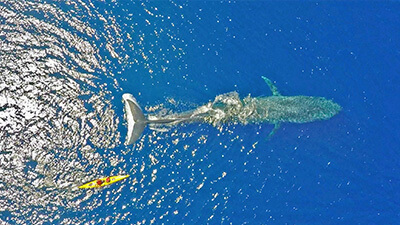
The Sri Pada pilgrimage is a seasonal event that takes place between the months of December to May each year, where thousands flock to pay homage to sacred footprint atop the Adam’s Peak. Few mountains the world over might have attracted as many pilgrims as this one which soars 7000 feet above sea level and is situated off Ratnapura, the city of gems. The pilgrimage converges the nation’s four religious faiths. The sacred footprint is, according to the Buddhists, that of Buddha who visited the peak at the invitation of its guardian deity. To the Hindus it is that of Shiva, the great Hindu God of Destruction. To the Christians it is that of St. Thomas, whilst to the Muslims it is that of Adam who, post-expulsion from the Garden of Eden, took refuge on this mountain. The Sri Pada pilgrims follow a number of traditions customs. At a certain point during the climb, pilgrims pause en route to throw a threaded needle into the bushes, commemorating the legend that Lord Buddha paused to mend a tear in his robe during his climb. When crossing the Seetha Gangula, a stream about half-way to the summit, pilgrims cleanse themselves with the icy water, which helps refresh them for the final climb. It would be considered crass and certainly lacking in religious devotion to ask how much longer it will take to reach the summit. Instead, passers-by exchange the greeting “Karunavai” or Peace. Many devotees recite religious poems as they climb to help them on their arduous journey. Shortly before the summit, where the steps become an almost vertical stairway, during the height of the season, pilgrims may have to wait in line for as long as half an hour before proceeding to the small platform on top.
Polonnaruwa was established as the capital after Anuradhapura had been invaded in the late 10th century. Under King Parakramabu, who ruled in the late 11th century, Polonnaruwa became a magnificent walled city. He built the vast reservoir, Parakrama Samudra (the Sea of Parakrama) still in use today, and ordered the construction of monasteries, temples, palaces, bathing pools and Buddhist statues, all set in a forested park surrounded by moats. The remains of Polonnaruwa are so numerous that only a few highlights can be mentioned. One of the most striking of the many sites is Polonnaruwa’s Gal Vihara or Rock Shrine, the reclining Lord Buddha is near another statue showing him seated in deep meditation, his throne adorned with lions and thunderbolts. A second seated Lord Buddha, surrounded by other deities including Brahma and Vishnu, is set within a cave cut into the rock face that still bears traces of the frescoes which once decorated the walls. The fourth Gal Vihara statue departs from the conventional poses by depicting the Lord Buddha as a seven-metre tall standing figure with arms crossed. While these statues are regarded as masterpieces of Sri Lankan art, other remarkable carvings include a 4-metre-high bearded figure (probably King Parakramabu) holding what seems to be a book. Another dramatic work is an inscribed stone “book” 9 metres long and around 50 centimetres thick. The Quadrangle, with 12 superb buildings standing on a platform in the centre of the ancient city, and the Lankatilleke image house, a vast brick building with a standing Buddha at the rear, are also among the many magnificent remains.
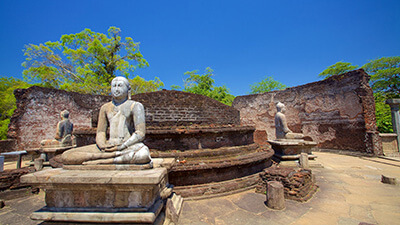
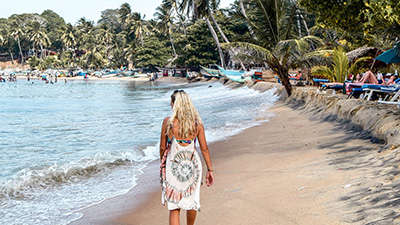
Located 314km from Colombo, Arugam Bay is an internationally acclaimed hot spot for surfing. The very first international surfing competition was held by the International Surfing Association (ISA) in the summer of 2004 at Arugam Bay. The surfing season in Arugam Bay begins in April and ends in October. It’s not just the surfing, but the coral reefs, the abundance of tropical fish and the lovely sceneries of mangroves, jungles, lagoons, rivers, rice fields and sand dunes make Arugam Bay a sight to behold.
Bandarawela is a big town, situated in Badulla District, Uva Province, Sri Lanka, which is 28 km away from Badulla. Due to higher altitude, Bandarawela has a mild weather condition throughout the year hence, it is popular among the citizens to spend the vacations with their family members. Bandarawela is 200 km away from Colombo and about 125 km away from Kandy, Colombo and Kandy being two capital cities in Sri Lanka. Both roads and railway transportation facilities are available to reach the area within a few hours. Bandarawela town, tinted with a colonial past resting among lush forestation has found its niche among its visitors as a base for eco-tourism.
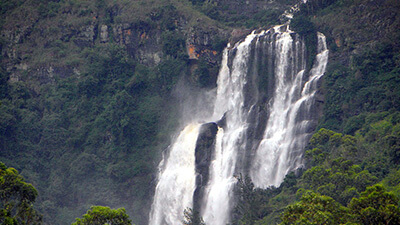
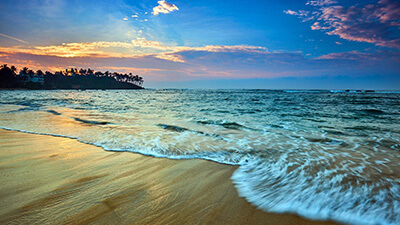
Bentota are popular exotic beaches along the Colombo- Galle road located about 65km from Colombo. The Bentota lagoon stretches parallel to the beach adding a vista of tranquillity, with its tropical greenery and islets rich in bird life. Bentota is havens to tourists with accommodation to suit every budget, a range of Ayurveda treatments, and an array of water sports leaving the adventurer spoilt for choice! This tourist destination offers you water skiing on the rivers or estuaries, snorkelling, scuba diving, wind surfing, parasailing, fishing and a host of other activities to suit your mood.
Sri Lanka’s Central Highlands comprising of Peak Wilderness Protected Area, the Horton Plains National Park and the Knuckles Conservation Forest has been the most recent addition to the UNESCO World Heritage list, and was designated a natural heritage site in mid 2010. These montane forests, where the land rises to 2,500 metres above sea-level, are home to an extraordinary range of flora and fauna, including several endangered species such as the western-purple-faced langur, the Horton Plains slender loris and the Sri Lankan leopard. The area is home to the Bear Monkey – the highland race of the endemic Purple-faced Leaf Monkey. In the Peak Wilderness a small herd of elephants still roam. The region is considered a super biodiversity hotspot. The avi-fauna diversity in the region is also high with many endemics found only in the hill country like the Whistling Thrush, Bush Warbler, Yellow-eared Bulbul, Dull-blue Flycatcher, Sri Lanka White-eye and the Wood Pigeon. The site includes the largest and least disturbed remaining areas of the submontane and montane rain forests of Sri Lanka, which are a global conservation priority on many accounts. More than half of Sri Lanka’s endemic vertebrates, half of the country’s endemic flowering plants and more than 34% of its endemic trees, shrubs, and herbs are restricted to these diverse montane rain forests and adjoining grassland areas.
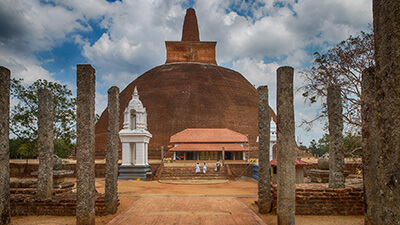
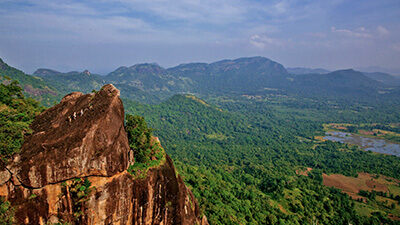
Gal Oya National Park in Sri Lanka was established in 1954 and serves as the main catchment area for Senanayake Samudraya, the largest reservoir in Sri Lanka. Senanayake Samudraya was built under the Gal Oya development project by damming the Gal Oya at Inginiyagala in 1950. An important feature of the Gal Oya National Park is its elephant herd that can be seen throughout the year. Three important herbs of the Ayurveda medicine, Triphala: Terminalia chebula, Terminalia bellirica and Emblica officinalis are amongst the notable flora of the forest. From 1954 to 1965 the park was administrated by the Gal Oya Development Board until the Department of Wildlife Conservation took over administration. The National Park is situated 314 km from Colombo.
Dutch Fort at Galle, close to the island’s southernmost point, 173km from Colombo, has the distinction of being the best-preserved sea fort in South Asia. A living heritage site, this 90 hectare (222 acre) attraction is a superb blend of architecture, with fortifications that resemble those in the coastal areas of Portugal. The fall of Galle to the Dutch in 1640 saw its fortifications consolidated further along the lines of the fortified cities of Europe. The Dutch and the English colonial styles are evident in the deep verandahs of houses supported by timber or masonry pillars. Originally established by the Portuguese in the 16th Century, it reached its zenith under Dutch rule in the 18th Century, providing spacious housing, wide roads and all necessary facilities within its walls including an intricate sewage system that was ahead of its time. When it comes to fortified towns, nothing can compete with the Dutch Fort in Galle. This World Heritage Site on the south coast was the main port of call for ships sailing between the East and Europe. Today, inside the Fort you will find that it exudes old-world charm. Within the ramparts and stonewalls of the old Galle Fort – which spreads over a 36-hectare peninsula — magnificent buildings remain. The narrow streets are dotted with Dutch colonial villas and there's a welcome absence of vehicular traffic. There are several museums and antique shops that display curiosities from the island's colonial era. Of the many colonial buildings, perhaps the most absorbing is the Dutch Reformed Church, containing ornately carved memorials to the city's Dutch settlers. The original entrance gate to the Fort, on the northeast side of the peninsula still bears the carved insignia of the Dutch East Indies Company (or VOC, from “Vereenigde Oost Indische Compagnie”). The Fort also hosts some of the island's most exclusive boutique-style accommodation in former villas restored to their colonial glory.
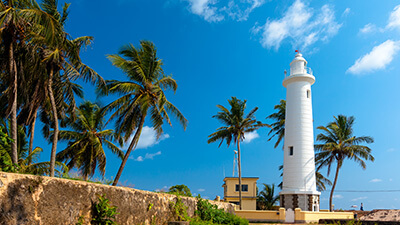
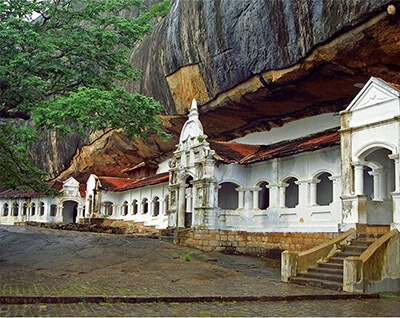
Dating back to the First Century BC, the Golden Temple of Dambulla has been the centre of pilgrimage for Buddhists and Hindus alike for 22 centuries. It is Sri Lanka’s most popular historic site. The Cave monastery, home to Buddhist monks is covered with exquisite 2,000 year-old murals depicting the life and times of the Lord Buddha. The shrines also house a collection of 157 statues of Buddha in various sizes and poses, including a 15 metre long reclining Buddha and vividly coloured frescoes on the walls and ceiling, making this the largest antique painted surface in the world. To reach Dambulla’s rock temples, pilgrims and tourists alike must climb barefoot up the sloping ground and several series of stairs almost to the summit, 100 metres above the plain. From here, the strikingly distinctive rock fortress of Sigirya is visible, but the five caves or shrine rooms of Dambulla lie just ahead. All of these house multiple images of the Lord Buddha, either lying, standing or seated. The astonishing frescoes and the sheer size and antiquity of the caves convinced UNESCO that Dambulla should be preserved as a World Heritage Site. The largest and most impressive of the caves, the Temple of the Great King, is 52 metres from one side to another, and 23 metres from the entrance to the back, with the sloping ceiling seven metres at its highest point. The entire surface of the cave is a mosaic of frescoes with so many themes and styles that it is easy to be overwhelmed.The paintings at Dambulla are representative of many different epochs of Sinhalese Buddhist art, although the classical school of Sinhalese painting (which ceased at the end of the 12th century) is not represented. The so-called New School supposedly influenced by the contemporary South Indian Deccan School — is less successful than the earlier indigenous art forms, using brilliant colour schemes with red and yellow predominating. It is not possible to date the Dambulla paintings precisely, since they have been over-painted throughout the centuries. Some, however, were originally done by Kandyan artists during the 17th century. Beyond the endless repetitions of seated Buddhas, and red, yellow and black geometric motifs, there are bands of sinuous tendrils and flowers; stories of the life of Lord Buddha including the Jataka tales relating his previous lives in the Temple of the Great King. There are also murals depicting battles, and others showing important events in the history of Sri Lanka. To fully appreciate this unique art, it is advisable to either go with a knowledgeable guide or to wander slowly, focusing on whatever seems to be most fascinating, remembering always that Buddhist art is not designed to be creative or original, but to impart the teachings of Lord Buddha, the Enlightened One.
Hikkaduwa, almost 100 kilometres south of Colombo, has long been known as Sri Lanka’s most popular beach resort, famed for its surf and coral reef as well as its wide range of accommodation, food, fun and shopping. This is perhaps the only coastal region where that special holiday feeling dominates town, with shops selling resort wear, renting out bicycles, offering courses in scuba diving and selling all kinds of local souvenirs, batik fabric and jewellery. Today it’s a favourite with the younger visitor and the vibrant nightlife also attracts young Sri Lankans looking for out-of-town fun and entertainment on the weekends.
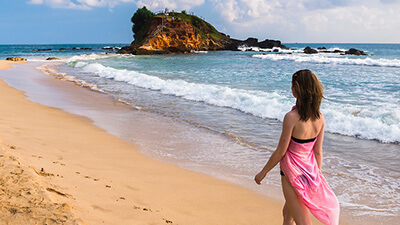
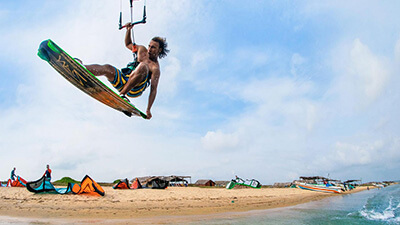
The sparkling blue surf of the Indian Ocean and scenic tropical lagoons which edge the western shores of the Wayamba province are glided with 240 kilometres of wide, sun drenched beaches.
Minneriya National Park is a hot spot for safari lovers because of the abandons of Elephants. Furthermore it is situated near Habarana which have some high class hotels for tourists and some famous world heritage sites like Anuradhapura, Polonnaruwa and Sigiriya which are relatively close to Minneriya.
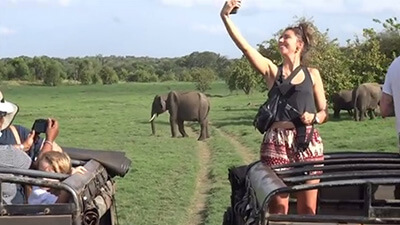
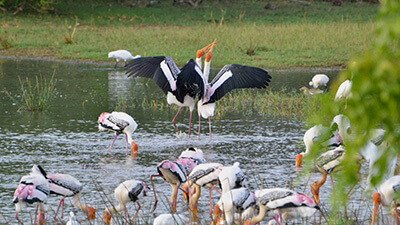
Kumana National Park in Sri Lanka is renowned for its avifauna, particularly its large flocks of migratory waterfowl and wading birds. The park is 391 kilometres (243 mi) southeast of Colombo on Sri Lanka's southeastern coast.Kumana is contiguous with Yala National Park. Kumana was formerly known as Yala East National Park, but changed to its present name in 5 September 2006. Kumbukkan Oya forms the southern boundary of the national park. Some 20 lagoons and tanks support the extensive birdlife of the national park. The lagoons are shallow with depths less than 2 metres (6.6 ft).
Negombo is known for its huge and old fishing industry with busy fish markets, and the nice sandy beaches with modern hotels, guest houses, fine restaurants, pubs and the night life.
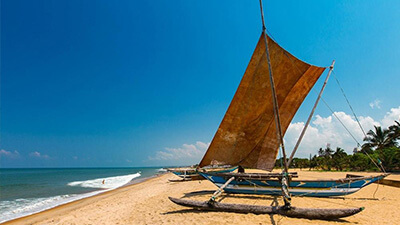
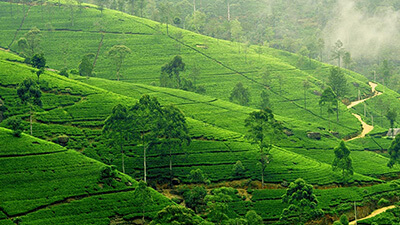
The beauty of Nuwara Eliya is breathtaking. The early British settlers favoured its mountainous landscape, cascading waterfalls and sleepy towns nestling into the mountainside. The abundant rainfall, sunshine, cold nights and mists provide the perfect climate for growing tea. As you climb higher the air grows cooler and the clouds get closer. This is one of the best holiday resorts with the most picturesque golf course in Asia. Beautiful waterfalls cascading down the mountain slopes enhance the beauty of the hill country. The geographical formation of the Island with the central highland sloping down to the coastal plains has resulted in several rivers and streams starting from the central region flowing down the hilly slopes in a radial pattern, creating beautiful waterfalls in several places in the hill country. Ramboda Falls (100 meters) is seen on the way to Nuwara Eliya. Devon (86 meters) and St. Clair's (73 meters) are two waterfalls seen close to Nuwara Eliya.
Pasikuda and Kalkuda are unspoilt beaches in the East coast of Sri Lanka, close to the town of Batticaloa. The white sands, clear blue water, and the stillness of the sea are both captivating and unparalleled by far. Pasikuda is known to have one of the longest stretches of shallow coastline in the world. After the 2004 Tsunami and with the end of the Civil war, these beaches have regained its popularity among the locals and tourists alike
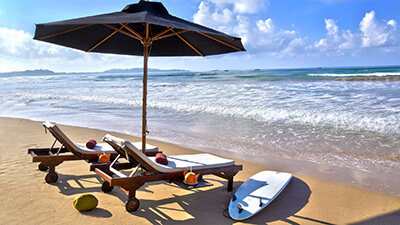
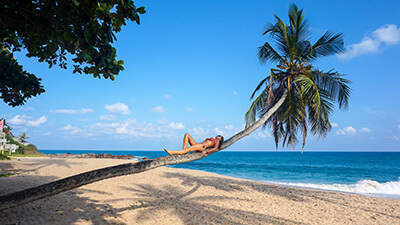
Many people claim that the beaches around Tangalle have the softest sand and the safest sea along the entire south coast. Tangalle seems set to become the most exclusive of the beaches along the south coast, and offers a chance to scuba dive around the coral reef protecting its four kilometres of sandy beach, and to explore a couple of wrecks. You could also watch nesting marine turtles drag themselves ashore at night to lay their eggs at Rekwalla.
Trincomalee is some of the most picturesque and scenic beaches found in Sri Lanka, relatively unspoilt and clean. The area is famous for bathing and swimming, owing to the relative shallowness of the sea, allowing one to walk out over a hundred meters into the sea without the water reaching the chest. Whale watching is a common pastime in the seas off Trincomalee, and successful sightings are on the rise with the increase of tourism in the area.
